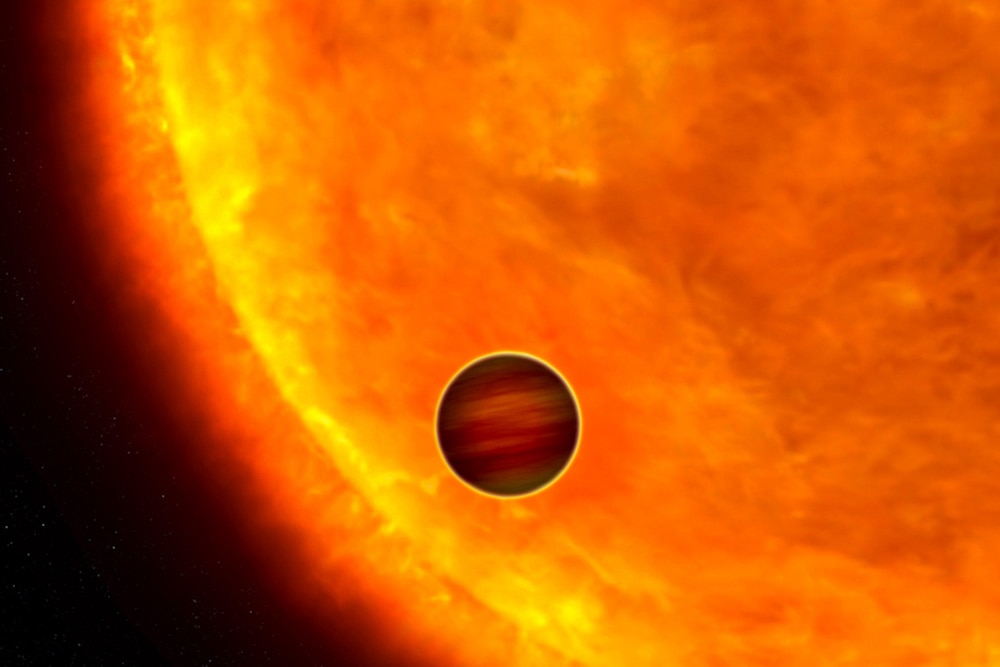
Planets like Jupiter are a little weird; their cores are under so much pressure that an odd quantum mechanical mechanism called degeneracy kicks in, and it has the weird property that if you add more mass the planet actually shrinks.
This planet is so freaking hot it's inflated like a balloon.
It's so close to the star that the star raises tidal bulges enough to distort the planet into an egg shape, and the planet raises bulges in the star as well (this is actually seen in the observations, since it changes the star's apparent brightness as it rotates).
The star spins a bit more slowly than the planet orbits, so the bulge raised in the star actually pulls the planet backwards a bit, stealing orbital energy from it (this is similar though opposite to what happens to our Moon due to the tidal interaction with Earth).
That means that not only is the planet close to its star, it's actually getting closer all the time!
If this planet is actually getting closer to its star via tides then we may be able to see it in the observations pretty soon.
That star is hot, and the planet close.
I'll note that many planets would get torn apart by their star's gravity if they get too close, but in this case TOI-2109b has enough mass that it can hold itself together probably right up to the point the star consumes it.
A planet like this is an interesting laboratory for lots of different kinds of orbital and atmospheric observations, and well as understanding what the planet is doing to its star